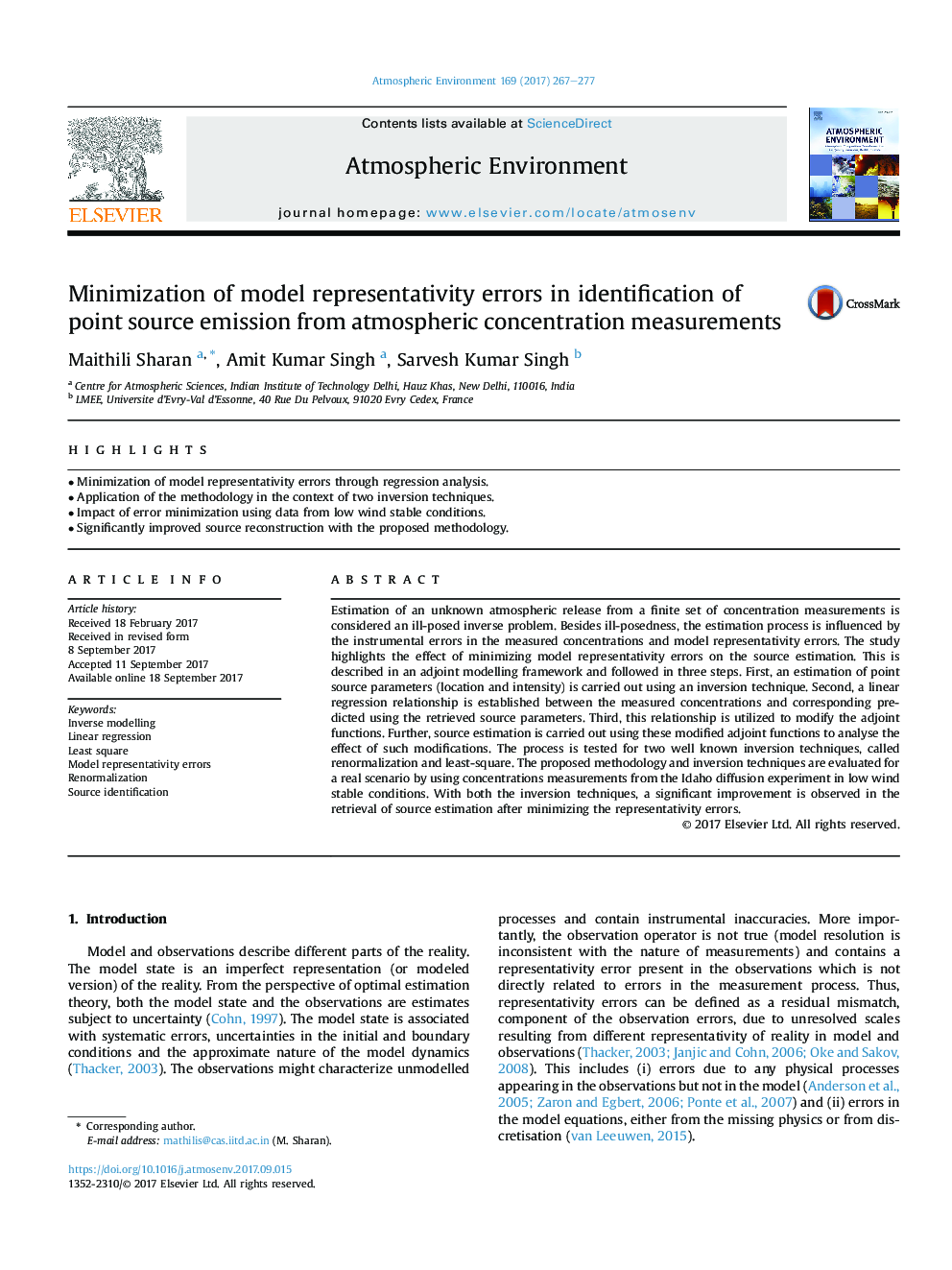| Article ID | Journal | Published Year | Pages | File Type |
|---|---|---|---|---|
| 5752820 | Atmospheric Environment | 2017 | 11 Pages |
Abstract
Estimation of an unknown atmospheric release from a finite set of concentration measurements is considered an ill-posed inverse problem. Besides ill-posedness, the estimation process is influenced by the instrumental errors in the measured concentrations and model representativity errors. The study highlights the effect of minimizing model representativity errors on the source estimation. This is described in an adjoint modelling framework and followed in three steps. First, an estimation of point source parameters (location and intensity) is carried out using an inversion technique. Second, a linear regression relationship is established between the measured concentrations and corresponding predicted using the retrieved source parameters. Third, this relationship is utilized to modify the adjoint functions. Further, source estimation is carried out using these modified adjoint functions to analyse the effect of such modifications. The process is tested for two well known inversion techniques, called renormalization and least-square. The proposed methodology and inversion techniques are evaluated for a real scenario by using concentrations measurements from the Idaho diffusion experiment in low wind stable conditions. With both the inversion techniques, a significant improvement is observed in the retrieval of source estimation after minimizing the representativity errors.
Related Topics
Physical Sciences and Engineering
Earth and Planetary Sciences
Atmospheric Science
Authors
Maithili Sharan, Amit Kumar Singh, Sarvesh Kumar Singh,
